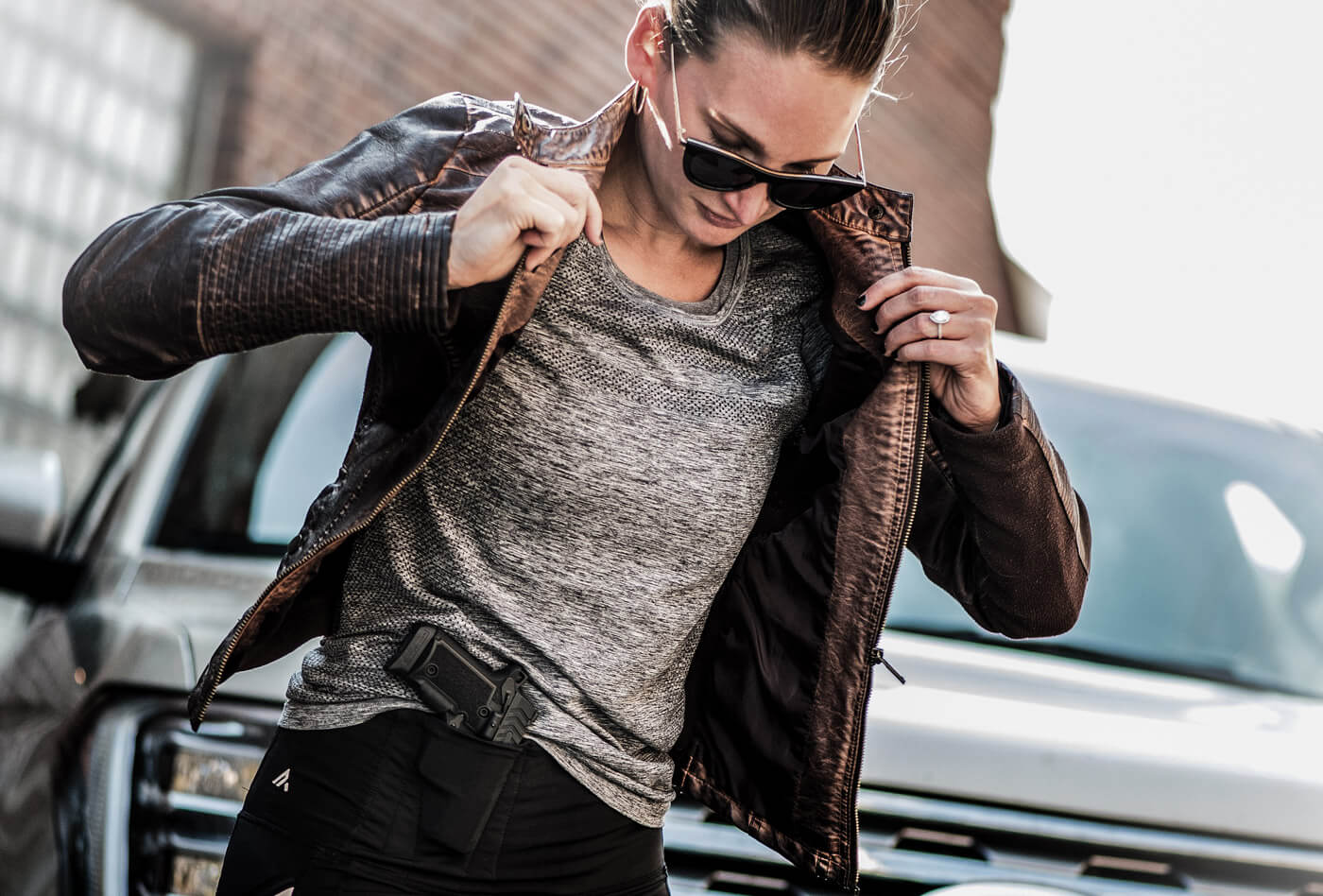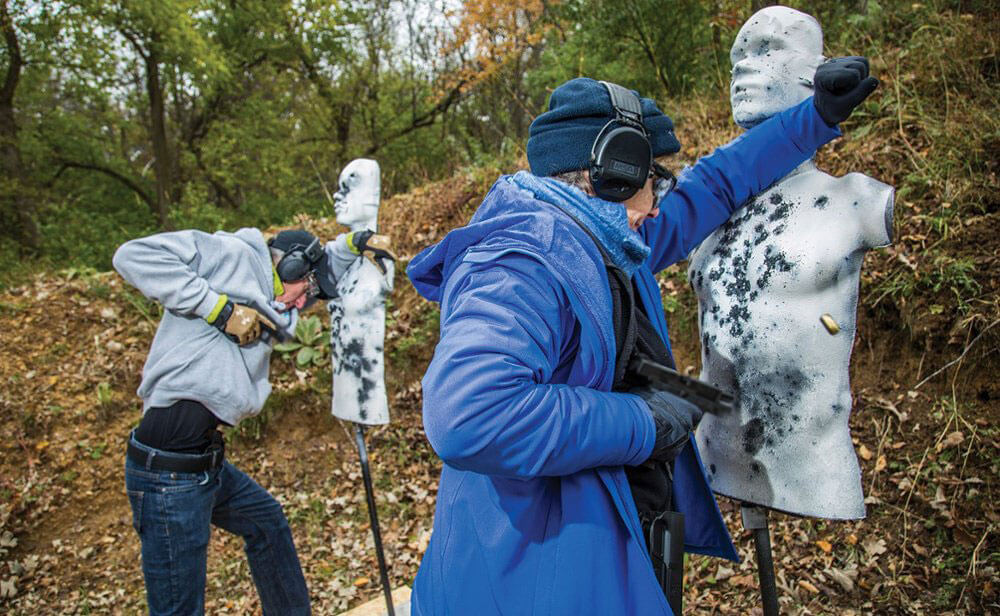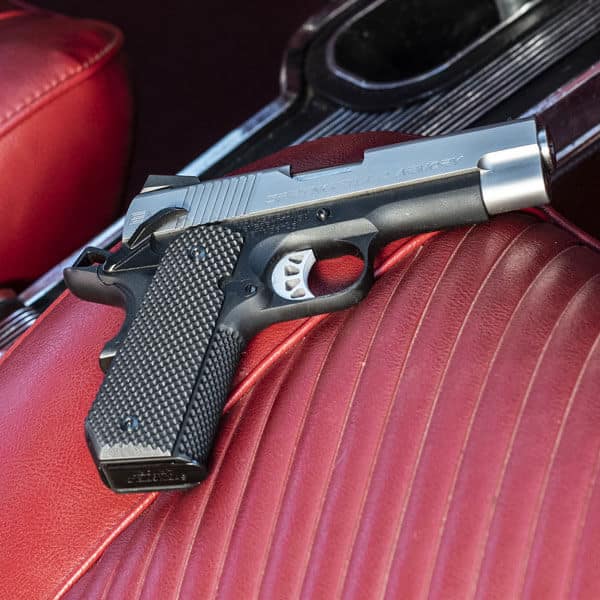Cold Weather Carry Tips
October 13th, 2019
4 minute read
As a native Californian, I sometimes forget the whole world doesn’t walk around in T-shirts, shorts and flip flops year-round.
Recent trips to northern Illinois and central Pennsylvania reminded me not everyone has it so easy when it comes to concealed carry. Clearing a baggy T-shirt to draw your handgun is a lot different than having to fish your handgun out from under layer after cold-blocking layer of garments. Add a pair of cozy gloves to the mix and getting to your gun in a hurry can be next to impossible. Even worse, if your gun snags on a garment during the draw stroke, it can be dropped with the muzzle pointing who knows where. If moving to a warmer climate isn’t in your plans, here are a few tips for cold-weather concealed carry.
Check out Handguns Magazine for more expert opinions and advice on concealed carry.
Common Snags
Concealing a gun in cold weather is easy, but drawing it is surprisingly difficult. Obviously, the smaller the gun and the more layers of clothing covering the gun, the harder it will be to get to. On a damp, chilly morning at The Site in Mount Carroll, Illinois, I watched students struggle to draw from under a hodgepodge of garments. They might sweep their heavy unzipped jacket aside — only to fumble with a sweatshirt they try to lift over their holstered gun. This is way too much of a burden.
Whenever possible, wear clothing layers under your gun and a single garment (your coat) over it. Keep in mind your outer garment can present holstering issues. Heavy winter jackets, even those of the “tactical” ilk, have drawstrings that can inadvertently enter the holster after your gun is drawn. If one of these strings gets caught up in the trigger guard and snags the trigger as you holster, the result could be an unintended discharge. To remedy this, take a little extra time before holstering. Closed garments make it a little more difficult to holster, and the problem is exacerbated when your gun is worn behind the hip.

Holstering Complications
Here’s where many shooters go wrong. While reaching across their body with their off-hand to move aside the concealing garment, they often inadvertently place a hand or arm in front of the muzzle. Safety concerns aside, reaching across your body while wearing a heavy winter coat can be difficult — especially when your gun is worn behind the hip. But with a closed garment you do need to use your off-hand to lift the garment and expose the mouth of the holster. To accomplish this, leave your gun pointed “downrange” and reach under the gun to lift the garment over the holster and pin it to your body.
Take a peek into the holster and, assuming it’s completely empty, holster your gun. If you’re using an open garment, you don’t have to deal with quite as much hassle. One holstering technique, taught by Gunsite’s Dave Hartman and others, is to orient the palm of your hand upward as you bring the gun to your body and hook the garment to sweep it aside and clear a path to your holster. Some instructors prefer to have you holster without looking at the holster, but since you shouldn’t even consider holstering if you have any doubt whether the fight’s over, I recommend taking a breath and a quick glance into the holster to verify there are no obstructions. Bulky clothing isn’t just problematic when drawing or shooting; it can actually induce a malfunction when firing a semi-automatic pistol.

Shooting from Retention
When shooting from a weapon retention position, with your gun held close to your torso, it’s possible for a garment to become entangled with the slide. If the slide can’t reciprocate, your pistol’s cycle of operations is disrupted. In other words, you’re holding a paper weight until you remedy the problem via the Tap, Rack, Assess protocol or something even more time-consuming. To keep the slide from snagging on their garments, many shooters are taught to cant their pistol outboard slightly. The top of the slide would be in approximately the two o’clock or three o’clock position to give the slide room to cycle.
Alternatively, when shooting from retention, you could simply “flag” your thumb. With this technique your thumb is wedged between your gun and your torso to create just enough of a barrier for the slide to do its thing. Indexing your thumb to the same part of your body also promotes consistent orientation for enhanced close-quarter accuracy. Last but not least on the cold weather calamity list are gloves. Clearly, the thicker the gloves, the less dexterity you will have. This will affect your ability to grab and clear your concealing garment, grip your pistol, and manipulate the trigger. For these reasons, I would opt for the thinnest gloves you can get by with, and I would practice with them extensively. If not, your gloves will probably feel like mittens when you try to draw and shoot with them.
Originally appeared in Handguns Magazine.
Join the Discussion
Continue Reading
Did you enjoy this article?

 56
56






